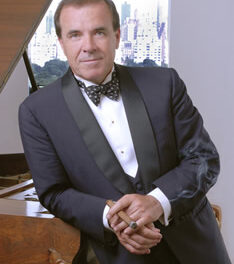There were very few empty seats in the University of North Carolina Greensboro School of Music’s delightful Recital Hall for a unique program for the Rice Toyota Sitkovetsky and Friends Series of chamber music. Music Director Dmitri Sitkovetsky said it was the first time a series concert had been devoted entirely to the music of one composer.
Sitkovetsky said Maurice Ravel (1875-1937) was especially fastidious about preparing his scores and very exacting about the works he released for publication. Ignat Solzhenitsyn, the piano soloist for the Greensboro Symphony’s current “Paris: City of Light” program joined conductor/violinist Sitkovetsky for the opening and closing works while the rich musical talents of the orchestra’s musicians were drawn upon for a rare performance of a septet.
According to Melvin Berger, in Guide to Chamber Music, the early 1920s were a turning point in Ravel’s musical evolution in which he “veered away from the lush, opulent harmonics” of earlier scores and instead emphasized “melody, quite often harsh, stark, and uncompromising melody” to bear the expressive weight of his music. Sitkovetsky said Ravel had devoted four years to the composition of his Sonata for Violin and Piano (1923-27) and planned out the whole work in his mind before putting pen to paper. Berger describes the first movement’s themes as having “a bare, transparent quality that sometimes leans toward the lyrical, and sometimes delivers outbursts of sharp, short, staccato notes.” The composer goes out of his way to emphasize the essentially incompatible nature of the “well-tempered” keyboard and the string instrument. The bi-tonality in the second and third movements throws this into sonic relief.
Sitkovetsky’s clear articulation, immaculate intonation, and wide palette of color and timbre were riveting throughout his searing performance of the sonata. Solzhenitsyn was no demure accompanist but rather strongly characterized the keyboard part while keeping the dynamics just within balance. His playing was as bracing as it was invigorating. The middle “Blues” movement found the two getting “down and dirty.” Berger aptly describes how Ravel gets the “violin wail like a saxophone … by having the violinist slide with one finger from note to note, and has the piano simulating strummed guitar chords.”
The unusual instrumentation in Ravel’s enchanting and ravishing Introduction and Allegro for harp, flute, clarinet, and string quartet (1905) tends to limit chances to hear it. Rare performances tend to be at music festivals or conservatories OR a series, such as Sitkovetsky’s, regularly drawing upon the symphony orchestra’s depth of talent. Harpist Hannah Blalock had been an impressive honors high school student from Matthews, NC when she was soloist with the GSO last season in the other famous harp work, Debussy’s Dances Sacrée et Profane (https://cvnc.org/reviews/2010/032010/GSO.html). She was joined by flutist Debra Reuter-Pivetta and clarinetist Kelly Burke who are GSO principals. The string quartet consisted of concertmaster John Fadial, violinist Ramilya Siegel, and principal players cellist Beth Vanderborgh and violist Diane Phoenix-Neal. The blending of two pairs of instruments, the flute and clarinet early in the Introduction, were striking. An extended solo cadenza for harp gave Blalock ample opportunity to show off her extraordinary technique and virtuosity.
Ravel’s Trio for Piano, Violin, and Cello (1914) can never be played too often for this Francophile! The composer uses an underlying 3-2-3 rhythm based upon a popular Basque dance in the first theme of the opening movement. The composer makes extraordinary virtuosic demands on all three players in order to produce the wide range of tone colors and effects. The second movement, “Pantoum,” is based on a Malayan verse form and features bright and sparkling music and some fascinating cross accents. The third movement, “Passacaille, is based upon the Baroque form “in which a melody, usually in triple meter, is subjected to continuous variation.” This leads without pause to the Finale, a “tour de force” fairly bursting with all sorts of technical devices and effects.
Solzhenitsyn and Sitkovetsky were joined in the Trio by cellist Brooks Whitehouse, a former UNCG faculty member and currently professor at the University of North Carolina School of the Arts. The range of violin color and tone Sitkovetsky produced was astonishing as was the clarity of his articulation no matter how fast the tempo marking. His prismatic range was well matched by Solzhenitsyn. Whitehouse’s full, rich cello sound was most welcome and his tightly focused harmonics were delightful.
This concert was a welcome chance to hear Solzhenitsyn once again. He has been a rewarding artist on both the keyboard and as a guest conductor with the North Carolina Symphony as well as on both the Chamber Arts Society in Durham and the Raleigh Chamber Music Guild series.











